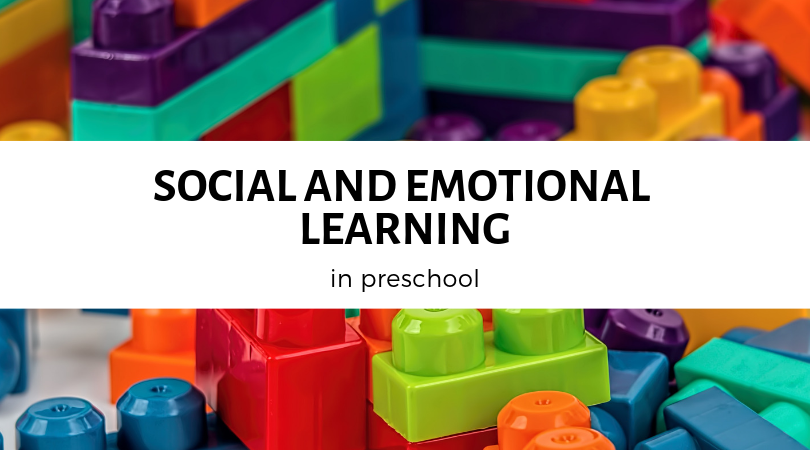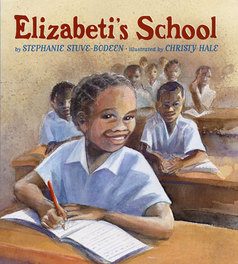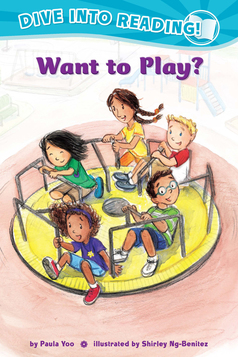In our newest series, educator Lindsay Barrett offers suggestions for using diverse books to teach social and emotional learning at various grade levels, beginning with preschool.

Social Emotional Learning (SEL) is a hot topic, but it’s certainly not new. Skills like empathy, cultivating and maintaining positive relationships, recognizing and managing emotions, problem solving, approaching tasks with grit and perseverance, and taking on others’ perspectives have always, and will always, be crucial to kids’ success. Research shared by CASEL reports that SEL programs lead to “immediate improvements in mental health, social skills, and academic achievement,” and “up to 18 years later, students exposed to SEL in school continue to do better than their peers on a number of indicators: positive social behaviors and attitudes, skills such as empathy and teamwork, and academics.” SEL is certainly worthy of time and attention from those who support children’s development.
Books are valuable tools for guiding conversations about SEL topics. Children can examine and learn from characters’ actions and experiences and relate them to their own. Of course, book selection is key. When kids see both themselves and others in diverse books, it says, “You matter. Reflect on your experiences.” and “Others matter too. Listen and learn about their experiences.” Therein lies the heart of SEL.
As students grow and change, so do their social emotional learning needs. Linking diverse books to SEL goals and challenges across different ages is a powerful way to support students as they navigate each developmental stage. This blog series will explore how diverse books can be used to support social emotional learning at different grade levels.
Using Diverse Books to Support Social Emotional Learning in Preschool
Preschoolers bring amazing exuberance and wonder, but they also have a lot to learn — everything from separating from loved ones when it’s time for school, to negotiating with peers, to persisting when those coat sleeves get turned inside out. So many preschool challenges relate to the social emotional learning topics of empathy, positive relationships, recognizing and managing emotions, problem solving, grit and perseverance, and perspective-taking.
The National Association for the Education of Young Children specifically highlights the power of books and book-related activities to support social emotional learning in preschool. Preschoolers love cozying up for a read aloud, whether with a special adult or the entire class. They naturally use books as a springboard for conversations. Typically, it’s not hard to get “me, me, me” preschoolers to talk about their own lives as related to books they hear!
Emotional literacy, or the ability to recognize and articulate feelings, is key for building empathy. Books give children concrete examples of why and how a character might experience a certain emotion. For example, the books in the Elizabeti series offer children the chance to reflect on emotions associated with common childhood experiences. Here are some sample conversations:
- After reading Elizabeti’s Doll, ask children, “How did having a new baby make Elizabeti feel? How can you tell? What did she do? What other ways could a someone feel about a new baby?”
- While reading Elizabeti’s School, ask, “How does Elizabeti feel
 about starting school? What does it mean to feel shy?” Later, ask “How does she feel now? What changed?”
about starting school? What does it mean to feel shy?” Later, ask “How does she feel now? What changed?” - After reading Mama Elizabeti, ask, “How did Elizabeti feel when she couldn’t find her brother? Have you ever had feelings like those? What happens to your body when you’re scared?”
The scenarios in the Elizabeti books are also perfect for inspiring and extending young children’s play. Play supports development across all areas, including social emotional learning. During play, children must take others’ perspectives, consider various emotions, and navigate conflicts. We think of play as coming naturally to children, but books can help level the “playing” field by introducing children to language and concepts they can integrate into their play. For instance:
- Rainbow Stew introduces rich vocabulary related to gardening and cooking that children can use in pretend play. The fact that the children spend the day with their grandfather suggests alternatives to standard “house corner” scenarios starring “the mommy and the daddy.”
- Baby Born shares plenty of diverse ideas about baby behavior and care for children who enjoy playing with dolls.
- Where on Earth is My Bagel?, a story about a boy who sends a homing pigeon from Korea to New York City to request a bagel, is perfect for acting out with a small group. After a structured experience, children could explore play scenarios about baking, sending letters, talking to neighbors, or contributing to any group problem-solving effort.
During play and throughout the preschool day, young children must learn how friendships work. There are so many dynamics to consider when children spend time together in pairs, triads, or larger groups. Simple books about friendship intended for early readers are also useful as preschool read alouds for concretizing all these nuances. For instance:
- Some preschoolers can become stuck on the idea of a “best”
 friend — or proclaim they have a new one every day! The simple text and photographs in Best Friends show many activities friends can do together. After reading, teachers might help students create a class book with photographs of children playing together in a variety of combinations, or highlight examples of how children enjoying different activities with different friends.
friend — or proclaim they have a new one every day! The simple text and photographs in Best Friends show many activities friends can do together. After reading, teachers might help students create a class book with photographs of children playing together in a variety of combinations, or highlight examples of how children enjoying different activities with different friends. - Want to Play?, part of the Confetti Kids series, follows a group of friends as they decide how and what to play together. Staging a puppet show of the story could help children practice language for advocating for themselves (“It’s too noisy for me here!”) and making plans with friends (“Let’s play something else. Want to play follow the leader?”)
Books offer so many opportunities for social emotional learning in preschool, and at all ages and stages. For more ideas about supporting social emotional learning using diverse books, check out Lee and Low’s Social Emotional Learning Diverse Book List for Grades PreK-8. Also don’t miss the recording of the webinar Using Diverse Books to Support Social and Emotional Learning with Katie Potter, Lee & Low’s Literacy Specialist.
 About the Author: Lindsay Barrett is a former elementary teacher and literacy nonprofit director. She currently works as a literacy consultant and stays busy as a parent of four children under six. Find out more about her work at lindsay-barrett.com.
About the Author: Lindsay Barrett is a former elementary teacher and literacy nonprofit director. She currently works as a literacy consultant and stays busy as a parent of four children under six. Find out more about her work at lindsay-barrett.com.








